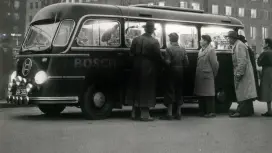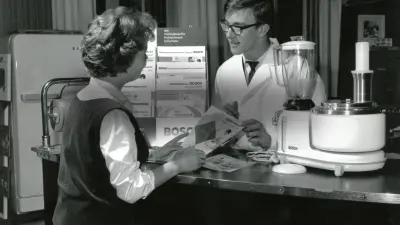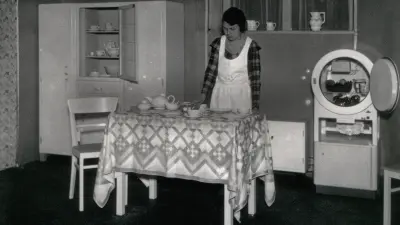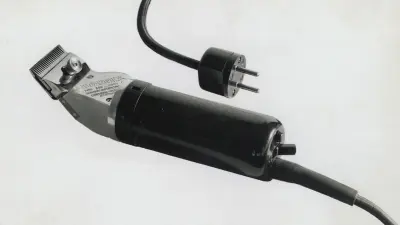Doing the laundry with Bosch
From sonic washer to washing machine
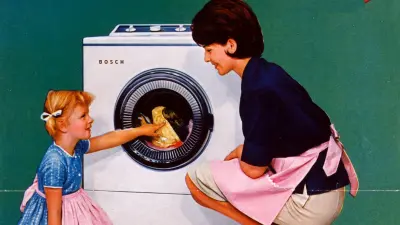
Nowadays, doing the laundry is simply a matter of pushing a button. But for a long time, it was one of the most strenuous and time-consuming household chores. Until electric washing machines rose to popularity in the middle of the 20th century, only simple tools were available for the many steps involved. Following initial steps with a small handheld appliance, Bosch debuted its first automatic washing machine in 1958.
The drudgery of getting laundry clean
“Washday again.” Washdays were long, and they were hard work — mainly for housewives and washerwomen. The task of washing clothes first involved heating water, making soapsuds, and presoaking laundry. Once this was done, clothes had to be rubbed, beaten, scrubbed, rinsed, and wrung out over and over again. The countless calls to make this chore easier went unheard until around 1900, when the first serviceable washing machines appeared on the market. But since these early appliances were still much too expensive, it would take decades for them to become standard.
Washing with sound
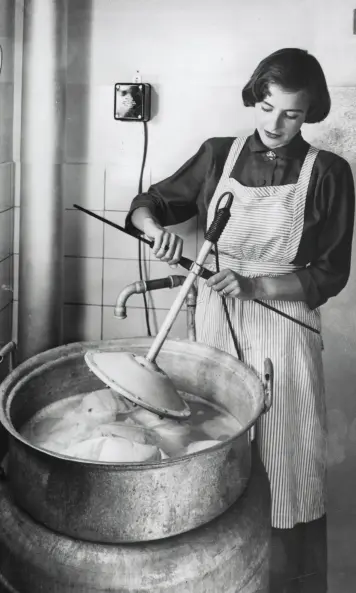
In 1949, Bosch surprised its customers with the sonic washer, a new laundry care product that was within the means of many households. Inspired by the electric Bosch horn, electroacoustics engineers had experimented to see if a vibrating membrane could be used to wash laundry, and came up with the sonic washer.
The appliance struck a chord with the consumers of the day. It was small, convenient, and inexpensive, and made doing the laundry noticeably easier. Instead of having to juggle a washboard and a brush, users could rely on the sonic washer to agitate dirt gently from their laundry.
Using it was simple. All that had to be done was to lower the appliance into a laundry tub or large pot. An electromagnet moved a membrane, which transmitted low-amplitude waves through the water. After just a brief period of exposure, this vibration shook the dirt from the fabric. The results were impressive for both white and colored laundry, with the added benefit that the process was gentle on fabrics. There were many benefits for homemakers: less wear and tear on laundry items, less physical exertion, lower electricity costs (thanks to the fast cycle), and more time for other tasks.
Advantages and disadvantages
Nonetheless, the success of the sonic washer was short-lived. For one thing, there was an undesirable side effect when it was used: a loud, unpleasant hum. Since the washing tub that many homemakers used was also the bathtub, the humming noise was carried along the pipes, causing considerable disturbance, especially in apartment buildings.
For another thing, while sonic washers had eased the manual work of washing clothes, they had not done away with it altogether. As washing machines became increasingly affordable in the late 1950s, they displaced sonic washers.
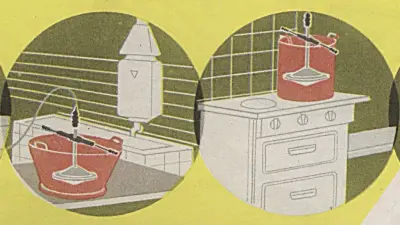
Washing machine with manual control
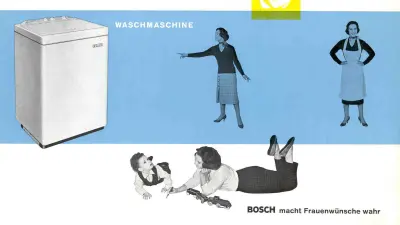
Bosch’s first drum washing machine, the W5, was launched in 1958 and brought long-awaited relief, offering “washing without getting your fingers wet” — an easy, almost casual solution. However, it still required some effort on the part of the homemaker. The program dial had to be turned to select water supply, pre-wash and main wash cycles, rinse cycles, and pumping out, and the machine could not yet spin. Apart from that, consumers still had to learn to trust the new electrical home appliance to work. In the words of an advertisement for the product: “he Bosch drum washing machine is not a robot, but willingly submits to a guiding hand and washes your laundry gently and thoroughly — just the way you want it.”
However, it soon became apparent that there was hardly any need for such a “guiding hand.” The laundry came out of the machine fresh and clean. Other models followed in quick succession, gradually reducing the need for any intervention. The A50 washing machine featured a program that controlled the entire washing process automatically, while the AS 50 laundry cabinet combined a washing machine and spin dryer in a single housing.
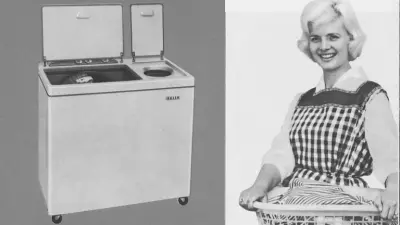
Fully automatic at last
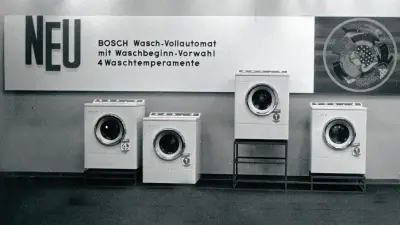
In 1961, the endeavor to leave everything to the machine was finally fulfilled by the Bosch WVA5, a fully automatic washing machine with wash-start preselection. The few work steps that were still necessary were set out briefly and concisely in the operating instructions: “Load and switch on the Bosch washing machine. The washing process will start automatically at the preselected time. Your laundry will be washed and spun line-dry at the chosen time, with no further action required on your part.”
Efficient and innovative
Washing machines were continuously developed over the following decades. Appliances became more economical and offered a wide range of washing programs. Energy efficiency and economical water consumption are also key features of the latest models from the Bosch subsidiary BSH Hausgeräte GmbH. Automatic and detergent-specific dosing functions help portion detergent correctly and sparingly. A wide range of programs make laundry care easier — so even smaller loads or items with special care requirements can be washed quickly and without harming the environment. Additional functions such as Iron Assist reduce creases, while Home Connect allows washing machines to be operated remotely via smartphone as well.
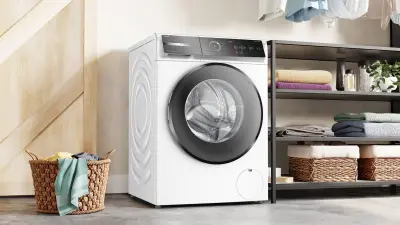
Author: Bettina Simon
